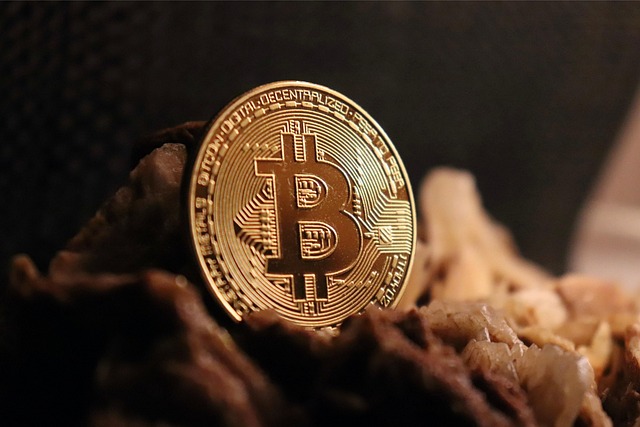AI takes nearly 60% of global venture capital dollars in Q1: Pitchbook
Artificial intelligence startups received the lion’s share of venture capital investments across the globe in the first quarter of 2025, according to new data from Pitchbook.“Investors still have an AI FOMO [fear of missing out] problem,” the research firm said in an April 17 report, which revealed that 57.9% of global venture capital dollars in Q1 went to AI and machine learning startups.Comparatively, the first quarter of 2024 saw just 28% of VC dollars channeled into AI startups.Pitchbook said the capital flowing into AI was even more concentrated in North America, with 70% of venture funding in the region going into AI startups in the first quarter.The global AI sector raised $73 billion in the first quarter, which was more than half of the total value of AI-related deals made last year. However, more than half of that was for OpenAI, which closed a $40 billion funding round led by SoftBank on March 31.Other notable AI funding rounds in March included Anthropic, which raised $3.5 billion in a Series E round. “The fear of somebody else winning your market has never been higher than it is now,” said Maria Palma, general partner at Freestyle Capital. “You haven’t seen a slowdown because the rate of change on the technology side is almost indigestible,” she added. Nnamdi Okike, co-founder and managing partner at 645 Ventures, cautioned that there are extremes happening, “and that’s going to mean there’s going to be a lot of losers.” “A lot of VC funds are just kind of saying, ‘Hey, this can only go up.’ And that’s usually a recipe for failure — when that starts to happen, you’re becoming detached from reality,” he added.AI deals as a share of all global VC deal activity. Source: PitchBookCrypto venture capital creeps up Comparatively, crypto and blockchain startups raised just $4.8 billion in Q1, according to CryptoRank. Almost half of that, $2 billion, was Abu Dhabi investment firm MGX investing in Binance. This was still over four times as much as the $1.1 billion raised in the fourth quarter of 2024, and the biggest quarter for crypto venture capital deal value since the third quarter of 2022.Related: Crypto VCs ‘excited’ about AI agents but not yet investingCrypto venture capital appears to be warming again with a friendlier regulatory environment emerging in the US.On April 17, Mike Novogratz’s Galaxy Ventures Fund I was reportedly set to exceed its $150 million funding target and could hit $180 million when it closes at the end of June. Magazine: Illegal arcade disguised as … a fake Bitcoin mine? Soldier scams in China: Asia Express
Coinbase distances Base from highly criticized memecoin that dumped $15M
Crypto exchange Coinbase has distanced its blockchain network Base from a memecoin it shared that saw massive backlash after the token rapidly gained, then dropped in value by millions of dollars.Base posted to X on April 16 with an image promoting the network with its marketing tagline, “Base is for everyone,” it also shared a link to a token of the same name on Zora, a social network where users can make posts into tokens for others to speculate on.In just over an hour after it was created, the Base is for everyone token hit a peak market capitalization of $17.1 million — then dropped by nearly 90% over the next 20 minutes to a market value of $1.9 million, DEX Screener data shows.The Base is for everyone token’s market cap saw a slight recovery after a rapid, nearly 90% fall in value soon after its launch. Source: DEX ScreenerThe token has since made a slight recovery and was trading around $7.7 million at time of publication.A Coinbase spokeswoman distanced Base from the token, telling Cointelegraph that “Base did not launch a token.”“This is not an official Base token, and Base did not sell this token. Base posted on Zora, which automatically tokenizes content,” the spokeswoman said.The spokeswoman pointed to a legal disclaimer on the token’s Zora page that states Base’s posts on the token-making platform “are similar to those already shared on X — do not expect profits or returns and no ongoing development or efforts will be made to increase their value.”The post adds that Base will receive 10 million tokens out of a total supply of 1 billion that it pledged never to sell, and money made from fees will support grants for the network’s developers.Base’s X post linking to the post on Zora. Source: BaseZora shows Base has earned over $61,000 from the token, which has seen its total trading volume surpass $26 million.Hundreds of X posts have criticized Base over the token, with one X user saying that “any credibility this chain had is now gone.”Former Riot Platforms researcher Pierre Rochard called the token “terrible for the industry, very short-term transactional extraction.” AP Collective founder Abhishek Pawa said on X that Base “tried redefining memecoins as ‘contentcoins’ and completely botched the execution.”“The core innovation actually has potential,” he added. “But base utterly fumbled execution, optics, and trader expectations, resulting in justified backlash.”Meanwhile, Base creator Jesse Pollack, who has posted to Zora to create dozens of tokens in the past two months, defended Base creating the token, saying on X that “someone has to normalize putting all of our content onchain. I’m not afraid for it to be us.”He added that creating a token for internet content is “the end game for how we can build a new economy where creators earn from their creativity,” which he said would “require overhauling our mental models and product experiences.”Token “horrifically sniped” and second launch fizzlesHarrison Leggio, the co-founder of crypto startup g8keep, said that the Base is for everyone token “was HORRIFICALLY sniped.”Leggio, who goes by “Pop Punk” on X, said he found two addresses that bought 21% of the token’s supply for 2 Ether (ETH), currently worth about $3,200, before both wallets transferred the tokens to other addresses and sold them for a toal profit of around $300,000.Source: Harrison LeggioRelated: Pump.Fun’s PumpSwap DEX processed $2.5B of trades last week, up 40% Just over 75 minutes after the creation of the Base is for everyone token, Base again posted to Zora to promote its presence at an event in New York next month — which also generated a related token.DEX Screener shows that token, called “Base @ FarCon 2025,” reached a peak value of only $987,570 in the minute after its launch before quickly dropping nearly 77% to settle to a value of around $230,000.Magazine: Memecoins are ded — But Solana ‘100x better’ despite revenue plunge
ENS founder warns of Google spoof that tricks users with a fake subpoena
The founder and lead developer of Ethereum Name Service has warned his X followers of an “extremely sophisticated” phishing attack that can impersonate Google and trick users into giving out login credentials. The phishing attack exploits Google’s infrastructure to send a fake alert to users informing them that their Google data is being shared with law enforcement due to a subpoena, ENS’ Nick Johnson said in an April 16 post to X. “It passes the DKIM signature check, and GMail displays it without any warnings – it even puts it in the same conversation as other, legitimate security alerts,” he said. The fake subpoena appears to be from a Google no-reply domain. Source: Nick JohnsonAs part of the attack, users are offered the chance to view the case materials or protest by clicking a support page link, which uses Google Sites, a tool that can be used to build a website on a Google subdomain, according to Johnson. “From there, presumably, they harvest your login credentials and use them to compromise your account; I haven’t gone further to check,” he said.The Google domain name gives the impression it’s legit, but Johnson says there are still telltale signs it’s a phishing scam, such as the email being forwarded by a private email address. Scammers exploit Google systems In an April 11 report, software firm EasyDMARC explained that the phishing scam works by weaponizing Google Sites. Anyone with a Google account can create a site that looks legitimate and is hosted under a trusted Google-owned domain.They also use the Google OAuth app, where the “key trick is that you can put anything you want in the App Name field in Google,” and use a domain via Namecheap that allows them to “put no-reply@google account as From address and the reply address can be anything.”Source: Nick Johnson “Finally, they forward the message to their victims. Because DKIM only verifies the message and its headers and not the envelope, the message passes signature validation and shows up as a legitimate message in the user’s inbox — even in the same thread as legit security alerts,” Johnson said. Google deploying countermeasures soon Speaking to Cointelegraph, a Google spokesperson said they are aware of the issue and are shutting down the mechanism that attackers are using to insert the “arbitrary length text,” which will prevent the method of attack from working in the future. Related: Hackers hide crypto address-swapping malware in Microsoft Office add-in bundles“We’re aware of this class of targeted attack from the threat actor, Rockfoils, and have been rolling out protections for the past week. These protections will soon be fully deployed, which will shut down this avenue for abuse,” the spokesperson said. “In the meantime, we encourage users to adopt two-factor authentication and passkeys, which provide strong protection against these kinds of phishing campaigns.” The spokesperson added that Google will never ask for any private account credentials — including passwords, one-time passwords or push notifications, nor call users. Magazine: Your AI ‘digital twin’ can take meetings and comfort your loved ones
Crypto venture fund Galaxy Ventures could hit a $180M fundraise: Report
Michael Novogratz’s Galaxy Ventures Fund I LP is expected to raise around $175 million to $180 million by the end of June to build a portfolio of 30 crypto and blockchain startups.According to an April 17 Bloomberg report citing people familiar with the matter, the fund — which has had a focus on payments and stablecoins — has surpassed its goal of raising $150 million.The fund closing above target comes at a time when crypto venture capital is thin on the ground despite an industry-friendly administration in the United States. Earlier this year, Novogratz’s firm reported that 2024 was also a tough year for crypto VC despite potential market drivers such as Bitcoin ETFs, the memecoin craze, and AI agents, which it said were “not particularly suited to venture capital.” Venture capitalists invested $11.5 billion into crypto and blockchain-focused startups across 2,153 deals in 2024, it reported. This was slightly higher than the $10 billion invested in 2023 but way down from over $30 billion invested in 2022. Crypto VC investments in America have also decreased by 22% to around $1.3 billion in the first quarter of 2025, according to Pitchbook. It also reported that there has been a pivot to AI, with the sector taking 58% of global venture dollars in the first quarter.Global crypto VC funding reached $4.8 billion in Q1, the highest since Q3 2022, reported CryptoRank earlier this month. However, the $2 billion investment in Binance from Abu Dhabi investment firm MGX was almost half of that. Crypto VC funding by quarter. Source: CryptoRankRelated: Mike Novogratz’s Galaxy Digital gets SEC nod for Nasdaq listingThe initial close for the Galaxy Ventures Fund I was in June 2024, when it raised $113 million. At the time, the fund’s portfolio included synthetic dollar issuer Ethena; M^Zero, a stablecoin liquidity DeFi protocol; layer-1 blockchain Monad; layer-2 tokenized asset chain Plume; and Renzo, a protocol supporting derivatives on assets locked in EigenLayer and Ethereum. Crypto doing what its supposed to doGalaxy CEO Mike Novogratz remains confident in crypto and Bitcoin (BTC), stating on X on April 16 that it is “doing what it’s supposed to,” and “acting as a report card on financial stewardship.”“In times of uncertainty, it reflects both the flight to safety and a long-term bet on a new financial system. But as a young asset, it still needs calm to grow. Adoption doesn’t thrive in disorder.”Magazine: Illegal arcade disguised as … a fake Bitcoin mine? Soldier scams in China: Asia Express
Solana network inflows surge — Will SOL price follow?
Over the past 30 days, crypto market participants have bridged more than $120 million in liquidity to Solana (SOL) from other blockchains, signaling renewed confidence in the network. Traders transferred the highest amount from Ethereum (ETH) at $41.5 million, followed by a $37.3 million influx from Arbitrum, according to data from Debridge. Meanwhile, users on Base, BNB Chain and Sonic moved $16 million, $14 million and $6.6 million, respectively. Total transferred amount from other chains to Solana. Source: debridgeThe return of liquidity to Solana paints a stark contrast to the network’s recent challenges. Following Argentina’s LIBRA memecoin scandal, which ensnared President Javier Milei, Solana saw investors move $485 million to other blockchains like Ethereum and BNB Chain. The current liquidity influx to Solana coincides with the return of double-digit price rallies from memecoins as POPCAT, FARTCOIN, BONK and WIF rose 79%, 51%, 25% and 21%, respectively, over the past seven days. However, further analysis shows the total generated fees for March coming in just under $46 million. For context, Solana’s fees peaked at over $400 million in January 2025. Currently, the total fees generated for the month of April are roughly $22 million. Solana total generated fees and revenue. Source: DefiLlamaRelated: Spot Solana ETFs to launch in Canada this weekSolana price has a tough uphill climb aheadFrom a technical perspective, Solana remains in a bearish trend on the 1-day chart. SOL must exhibit a bullish break of structure by closing a daily candle above $147 for a bullish trend shift. Solana 1-day chart. Source: Cointelegraph/TradingViewSolana remains under the $140 level, with the 50-day exponential moving average (blue line) acting as a strong resistance. A bullish close above the 50-EMA would have increased the likelihood of a positive trend reversal, but SOL prices have stalled at current levels. On a lower time frame (LTF) chart, Solana exhibited a bearish divergence between the price and relative strength index (RSI) indicator. Historically, a bearish divergence setup has signaled a correction period for Solana in 2025. SOL has experienced four bearish divergences since January, each following a price decline. Solana 4-hour chart. Source: Cointelegraph/TradingViewThere is a strong similarity between its previous and current bearish divergence. Both setups took place after the price moved temporarily above the 50-day and 100-day EMA (blue and green line) on the 4-hour chart, eventually leading to a price drop. Thus, it is possible that Solana could follow a similar path in the next few days. The 1-day demand zone is the immediate area of interest for a bounce between $115 and $108. Meanwhile, in a recent X post, Glassnode reported a significant shift in Solana’s realized price distribution, with over 32 million SOL bought at the $130 level over the past few days. That is 5% of the total supply, which means the $130 level could be a strong support level in the future. The analysis added,“Below $129, we see 18M $SOL (3%) at $117.99, while above, 27M $SOL(4.76%) sit at $144.54. In the short term, $144 could act as resistance and $117 as the lower bound of the price range, with $129 serving as the key pivot zone.”Solana UTXO realized price. Source: GlassnodeRelated: Bitcoin price recovery could be capped at $90K — Here’s whyThis article does not contain investment advice or recommendations. Every investment and trading move involves risk, and readers should conduct their own research when making a decision.
4 things that could turn crypto prices around in Q2 after the ‘best worst quarter’
Despite recent major developments in the crypto industry, the market has just posted its weakest Q1 performance in years — but a crypto analyst is pointing to several catalysts that could make Q2 more promising.“Frustrating. That’s the best word to describe the past quarter,” Bitwise chief investment officer Matt Hougan said in a recent market report, calling Q1 the “best worst quarter in crypto’s history.”Bitcoin and Ether took an unusual hit in Q1Bitcoin (BTC) and Ether (ETH), the two largest cryptocurrencies by market capitalization, saw price declines of 11.82% and 45.41%, respectively, over Q1 2025 — a quarter that has historically seen strong results for both assets. Since 2013, Q1 has been Bitcoin’s second-strongest quarter on average (51.2%) and historically the best for Ether (77.4%), according to CoinGlass data.Historically, Q1 2025 is the second-best performing quarter for Bitcoin on average, but it’s the best for Ether. Source: CoinGlassHougan pointed to a few key catalysts that could help crypto deliver more upside to Q2. He noted the rise in global money supply, which “after years of tightening, central banks across the globe are signaling a shift toward monetary easing and M2 expansion.”“Historically, these conditions have been favorable for risk assets, particularly for digital assets,” Hougan said. Echoing a similar sentiment, Pav Hundal, the lead analyst at Australian crypto exchange Swyftx, told Cointelegraph in February that “in normal times, global loosening measures are a pretty reliable lead indicator for crypto.”More recently, on April 14, analyst Colin Talks Crypto said, “Global M2 has remained at an ATH for 3 days in a row.” Bitcoin moves in the direction of global M2 83% of the time, economist Lyn Alden wrote in a September research report.BTC/USD vs global M2 supply. Source: Colin Talks CryptoHougan also said the “clean sweep of pro-regulations” in the US may be another bullish factor for the crypto market. “This is the long tail of regulatory clarity that no one is talking about, and it’s just getting started,” Hougan said.The rise in stablecoin assets under management may also be a positive indicator that more upside is to come this year in the crypto market. Hougan said during the first quarter, stablecoin assets under management surged to “an all-time high of over $218 million.”“Growing stablecoin adoption will benefit adjacent sectors, including DeFi and other crypto applications,” he said. Related: Bitcoin rally to $86K shows investor confidence, but it’s too early to confirm a trend reversalThe firm also said that the “geopolitical chaos” seen in the global economy during Q1 2025, mainly after US President Donald Trump’s inauguration through his tariffs, “are pushing global investors to reassess their portfolios.”It comes only days after Hougan recently reiterated his prediction that Bitcoin may surge approximately 138% from its current price of $84,080 by the end of the year.“In December, Bitwise predicted that Bitcoin would end the year at $200,000. I still think that’s in play,” Hougan said.Meanwhile, crypto exchange Coinbase recently said, “When the sentiment finally resets, it’s likely to happen rather quickly, and we remain constructive for the second half of 2025.”Magazine: Riskiest, most ‘addictive’ crypto game of 2025, PIXEL goes multi-game: Web3 GamerThis article does not contain investment advice or recommendations. Every investment and trading move involves risk, and readers should conduct their own research when making a decision.
Project 11 is offering 1 BTC to whoever cracks the longest Bitcoin key
Quantum computing research firm Project Eleven has launched a competition to see just how much of a threat quantum computing currently poses to Bitcoin.Launching the competition on April 16, Project Eleven said it is offering 1 Bitcoin (BTC) to whoever cracks the biggest chunk of a Bitcoin key using a quantum computer within the next year. Project Eleven said the purpose of the “Q-Day Prize” is to test “how urgent the threat” of quantum is to Bitcoin and to find quantum-proof solutions to secure Bitcoin over the long term.“10 million+ addresses have exposed public keys. Quantum computing is steadily progressing. Nobody has rigorously benchmarked this threat yet,” Project Eleven wrote on X on April 16.More than 6 million Bitcoin — worth around $500 billion — could be at risk if quantum computers become powerful enough to crack elliptic curve cryptography (ECC) keys, Project Eleven said.Participants can register as individuals or as a team and have until April 5, 2026, to complete the task. The prize winner will win 1 Bitcoin, currently worth $84,100.Source: Project ElevenThe aim is to run Shor’s algorithm on a quantum computer to crack as many bits of a Bitcoin key as possible, acting as a proof-of-concept that the technique could scale to crack a full, 256-bit Bitcoin key once the necessary compute is available. “The mission: break the largest ECC key possible using Shor’s algorithm on a quantum computer. No classical shortcuts. No hybrid tricks. Pure quantum power,” Project Eleven said.“You don’t need to break a Bitcoin key. A 3-bit key would be big news,” it added.No ECC key used in real-world applications has ever been cracked, noted Project Eleven, adding that the winner could “go down in cryptography history.”Project Eleven noted that several online platforms offer quantum computing access, such as Amazon Web Services and IBM.Source: Jameson LoppRelated: Bitcoin’s quantum-resistant hard fork is inevitable — It’s the only chance to fix node incentivesCurrent estimates suggest that around 2,000 logical qubits (error-corrected) would be enough to break a 256-bit ECC key, Project Eleven noted.IBM’s Heron chip and Google’s Willow can currently do 156 and 105 qubits — significant enough to cause concern, according to Project Eleven, which believes a 2,000-qubit quantum system could be developed within the next decade.Quantum threat to Bitcoin is real but there’s time, Bitcoiners sayBitcoin cypherpunk Jameson Lopp recently said the question of how concerned the industry should be about quantum computing is currently “unanswerable.”“I think it’s far from a crisis, but given the difficulty in changing Bitcoin it’s worth starting to seriously discuss,” Lopp said in a March 16 post.In February, Tether CEO Paolo Ardoino said the concern is well-founded but is confident that quantum-proof Bitcoin addresses will be implemented well before any “serious threat” emerges.Source: Paolo ArdoinoMagazine: Bitcoin vs. the quantum computer threat: Timeline and solutions (2025–2035)
Panama's capital to accept crypto for taxes, municipal fees
Panama’s capital city will accept cryptocurrency payments for taxes and municipal fees, including bus tickets and permits, Panama City mayor Mayer Mizrachi announced on April 15, joining a growing list of jurisdictions globally that have voted to accept such payments.Panama City will begin accepting Bitcoin (BTC), Ether (ETH), Circle’s USDC (USDC), and Tether’s USDt (USDT) stablecoin for payment once the crypto-to-fiat payment rails are established, Mizrachi posted on the X platform. Mizrachi said previous administrations attempted to push through similar legislation but failed to overcome stipulations requiring the local government to accept funds denominated in US dollars.In a translated statement, the Panama City mayor said that the local government partnered with a bank that will immediately convert any digital assets received into US dollars, allowing the municipality to accept crypto without introducing new legislation.Panama City joins a growing list of global jurisdictions on the municipal and state level accepting cryptocurrency payments for taxes, exploring Bitcoin strategic reserves to protect public treasuries from inflation and passing pro-crypto policies to attract investment.Source: Mayer MizrachiRelated: New York bill proposes legalizing Bitcoin, crypto for state paymentsMunicipalities and states embrace digital assetsSeveral municipalities and territories around the globe already accept crypto for tax payments or are exploring various implementations of blockchain technology for government spending.The US state of Colorado started accepting crypto payments for taxes in September 2022. Much like Panama City said it will do, Colorado immediately converts the crypto to fiat.In December 2023, the city of Lugano, Switzerland, announced taxes and city fees could be paid in Bitcoin, which was one of the developments that earned it the reputation of being a globally recognized Bitcoin city.The city council of Vancouver, Canada, passed a motion to become “Bitcoin-friendly city” in December 2024. As part of that motion, the Vancouver local government will explore integrating BTC into the financial system, including tax payments.North Carolina lawmaker Neal Jackson introduced legislation titled “The North Carolina Digital Asset Freedom Act” on April 10. If passed, the bill will recognize cryptocurrencies as an official form of payment that can be used to pay taxes.Magazine: Crypto City: The ultimate guide to Miami








